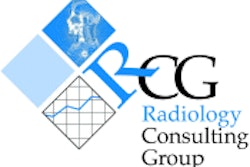While PACS continues to expand beyond its traditional buyer base of large hospitals and academic centers, that growth has rarely reached imaging centers. These facilities have been particularly averse to the large capital expenditures -- and on-site information technology staff requirements -- that PACS ownership can entail.
Hoping to alter the equation, the Hayward, CA-based PACS startup RadVault formally launched its application service provider (ASP)-based electronic delivery and storage (EDS) concept at the 2001 RSNA meeting in Chicago.
RadVault's services are aimed at imaging centers and small hospitals. Its ASP service combines off-site lifetime image storage with immediate electronic image and report distribution to referring physicians and radiologists, according to president Larry Atkins.
At customer sites, the company installs its RadVault workstation, a Sun Microsystems unit with software that captures image data from a modality. Data is acquired, encrypted, and transmitted via an Internet connection to the RadVault data center. The data center then stores the information and gives the RadVault workstation routing instructions using what the company calls its Smart Delivery approach, Atkins said.
"RadVault provides electronic delivery to referring physicians and radiologists, wherever they may be, even to multiple locations," he said. "Images and reports can be delivered simultaneously, immediately after they're completed."
The vendor's PC-based viewer workstation software and database, which includes capabilities such as viewing of full 16-bit data, annotation tools, and windowing/leveling, is free of charge, according to the firm.
RadVault’s Smart Trac technology contributes tracking capability, including an electronic audit trail, to meet privacy and security requirements of the Health Insurance Portability and Accountability Act (HIPAA), Atkins said. If referring physicians want to view prior studies or reports, the data center can transmit them, provided the imaging center authorizes the transaction using Smart Trac, Atkins said. Customizable prefetching protocols can be configured to ease the transmission process.
RadVault also offers a portable storage option, enabling patients to take home a copy of their images using the original DICOM image data set. As an added benefit, imaging centers could sell the CDs (which come with viewer software), to patients for a profit, Atkins said.
For its entire service, RadVault charges $2,900 per month, per modality, regardless of volume or the number of users, Atkins said.
"We don't want to give the imaging center or customer a disincentive to use higher volumes of our product," Atkins said.
Formed in early 2000, RadVault is a sister company of Image Enhancement System, a provider of digital upgrades to MRI scanners. RadVault is new to the PACS market, but the firm believes that its association with IES will pay dividends: IES has more than 500 customers around the world, Atkins said.
RadVault had six beta sites, which it declined to name. All of these clients have converted to paying customers, Atkins said.
By January 1, the firm will convert its data center (currently based at company headquarters) to a San Jose, CA, facility run by Qwest Communications International, which also provides ASP services to GE Medical Systems of Waukesha, WI. RadVault plans to set up a second data center by April to provide mirroring storage capability at a yet-to-be-determined location, Atkins said.
RadVault executives are familiar names in the medical imaging industry. Founder and CEO Dr. Peter Rothschild formerly served as medical director of the MRI research laboratory at the University of California, San Francisco, and is a pioneer in open MRI technology. Atkins had a nine-year stint as president and CEO at imaging center chain InSight Health Services.
By Erik L. RidleyAuntMinnie.com staff writer
December 19, 2001
Related Reading
Integration, security star in PACS exhibits, November 25, 2001
RadVault chooses Jet Print paper for patient reports, October 24, 2001
Copyright © 2001 AuntMinnie.com



















